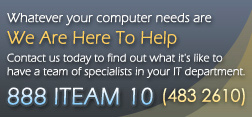E-Business Terms Explained
Below you’ll find a short list of the most common Internet and e-business terms. If you’re looking for an acronym or term that’s not on this list, check out www.whatis.com or www.webopedia.com, two online dictionaries for Internet technology users.
B2C (Business to Consumer) The exchange of goods and services between businesses and consumers. In Internet terms, B2C is also known as “e-tailing” which is short for electronic retailing and refers to the selling of retail goods on the Internet.
Bandwidth Literally, the width of a band of electromagnetic frequencies. This is the data that flows along a given transmission path. Both digital and analog signals have a bandwidth. Bandwidth usage on the Internet increases with the amount of data transmitted or received. In terms of e-commerce application, when choosing a web hosting service a user must consider how their website will function, how much bandwidth they require, and how their web hosting provider can service their bandwidth needs.
Browser A software application used to search information posted on the World Wide Web. The two most common applications are Netscape and Internet Explorer.
Content Management System An administrative software system that enables a user to add or change content on a website.
DSL(Digital Subscriber Line) A technology designed to bring high-bandwidth information to homes and small businesses over ordinary copper telephone lines. Telus high-speed Internet service is an example of DSL.
E-Business The use of Internet technologies to conduct or facilitate business.
E-Commerce The trading of goods and services over the Internet.
Extranet An intranet that is partially accessible to outsiders. As a business tool, it can allow secure access to customers, suppliers and other key business partners through the use of a username and password.
Firewall A system designed to prevent unauthorized access to or from a private network. Firewalls are frequently used to prevent unauthorized Internet users from accessing private networks connected to the Internet, especially intranets.
Home Page The main page of a website that users first see when they connect to a website.
HTML (Hypertext Markup Language) A “code” used to build web pages. A common language used to share data over the web.
Hyperlinks Embedded “connections” in web pages that allow users to “jump” from page to page anywhere on the Internet.
Internet The decentralized global network of computers, routers and cable connections that enable millions of the world’s computers to “talk” to each other as long as they are both connected to the Internet.
Intranet A private internal network that uses Internet technology to connect users. It provides a secure connection protected by a firewall, and allows access only to those of the same company or organization.
ISP (Internet Service Provider) Also called Internet Access Provider. An organization that provides access to the Internet either digitally or via analog for a monthly fee.
P2P (Peer to Peer) A form of file sharing communications in which each participant has the same capabilities and either party can initiate a communication session. PayPal is an example of a P2P payment system.
Client/Server A form of file sharing communications in which one program, the client, makes a service request from another program, the server, which fulfills the request. Most often used in a network of computers, as the client/server model provides a convenient way to interconnect programs that are distributed efficiently across different locations. Online banking services are an example of client/server communication.
Server A network device that provides services to client PCs, for example file access, print spooling or remote execution.
Splash Page An introductory page before a home page that acts as a curtain to a website. Usually holds little information and is mainly used for graphic illustration.
URL (Uniform Resource Locator) The alpha-numeric address used to locate a website.
VoIP (Voice over IP: voice delivered using the Internet Protocol) A set of hardware and software that allows users to use the Internet as a transmission device for ordinary telephone calls. A major advantage of VoIP and Internet telephony is that it avoids the tolls charged by ordinary telephone service. A major disadvantage is that currently it does not offer the same level of quality as direct telephone service connections.
Web Host An organization that provides users who do not have their own web servers with server space to “park” their website and allow others to view it over the Internet. ISPs also host websites and those such as AOL, will allow subscribers a small amount of server space to host

